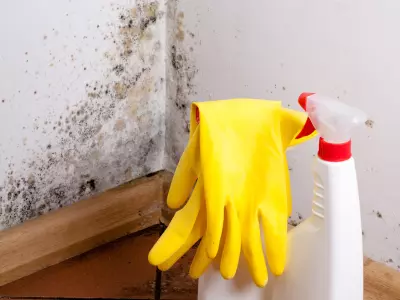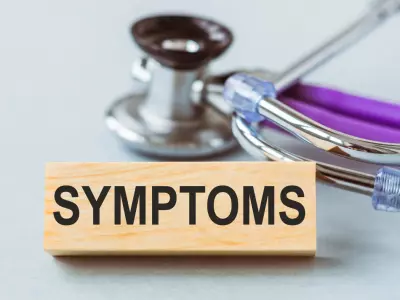Have you ever experienced a strange constellation of symptoms—persistent fatigue, brain fog, anxiety, or even odd food sensitivities—and felt like no one was taking you seriously?
That was me too.
Before I had the language for what was happening in my body, I was bouncing between lab tests, supplements, and diets — always chasing the next solution. I had unexplained fatigue that no amount of sleep would touch, mysterious skin issues, heightened anxiety, hormone imbalances, and a sense that my body just wasn’t bouncing back like it used to.
The cue that I knew it was more than just shifts in my own body due to aging? The same was true for my family, too—my husband, my kids — we were all falling apart in our own ways, but everyone’s symptoms were different. This created extra confusion as we were trying to navigate what was really going on.
I won’t keep you in suspense any longer…it turns out, we had been living in a home filled with toxic mold. But even more than the mold, it was the mycotoxins—the chemical byproducts of certain molds—that were wreaking havoc deep inside our systems. And this is when I tell you — this wasn’t just a case of mold on the wall or a musty smell in the basement. I’m here to bring awareness to what that mold leaves behind, invisibly, long after the leak is fixed or the drywall is cleaned. It’s invisible and odorless — and completely undetectable for the most part.
Mold vs. Mycotoxins: What’s the Difference?
This distinction is crucial: Mold is the organism; mycotoxins are its weaponry.
Mold spores can irritate the respiratory system, but it’s the mycotoxins—toxic metabolites released by molds like Stachybotrys, Aspergillus, and Penicillium—that can penetrate cell membranes, disrupt immune function, and completely hijack mitochondrial energy production. They’re fat-soluble — meaning they store in tissues and are very difficult to eliminate without targeted detox support. You can remediate the mold in a building, but the lingering effects of mycotoxins in the body can continue to cause health problems for months or even years after the exposure.
In fact, most conventional doctors don’t even test for this, and it’s often brushed off or misdiagnosed as anxiety, depression, chronic fatigue, fibromyalgia, or even early menopause.
But when you’ve lived it, you not only know — you feel it.
Signs and Symptoms of Mold + Mycotoxin Illness
Symptoms can vary widely, especially depending on genetic susceptibility, detox pathways, and the type and duration of exposure. The truth is, you might not even notice symptoms until you’ve already left the moldy environment.
So, what are some of the most common signs that mold and/or mycotoxins may be playing a role? Let’s take a look:
Neurological + Cognitive
✓ Brain fog, forgetfulness, poor concentration
✓ Anxiety, panic attacks, depression
✓ Light and sound sensitivity
✓ Sleep disturbances
✓ Dizziness or vertigo
Immune System Dysregulation
✓Increased allergies or sensitivities
✓ Autoimmune flare-ups or new onset
✓ Frequent infections
✓ Food intolerances
Respiratory + Sinus
✓Chronic sinus infections
✓ Postnasal drip or congestion
✓ Shortness of breath, coughing, wheezing
✓ Asthma-like symptoms
Energy + Mitochondrial Impact
✓ Crushing fatigue
✓ Exercise intolerance
✓ Muscle weakness or joint pain
Other Possible Signs
✓ Skin rashes, hives, or itching
✓ Unexplained weight gain or loss
✓ Hormonal imbalances
✓ Digestive issues (bloating, nausea, constipation, etc.)
Mold illness doesn’t always look like “just allergies.” The reality is, for many of us, it’s a full-body, whole-life impact. And these are just a handful of possible symptoms…
Testing for Mold and Mycotoxin Illness
This is where I wish someone had handed me a roadmap years ago — but just because I didn’t have it, doesn’t mean I’ll leave you in the dark.
As a functional practitioner and someone who’s lived it, here’s what I now use and recommend:
Step 1: Environmental Testing
Start with your home or workspace—you have to stop exposure before you can heal. Take a look into
→ ERMI or HERTSMI-2 testing (from dust samples)
→ air quality and cavity testing by a reputable indoor environmental professional (IEP)
Step 2: Symptom + History Review
A knowledgeable practitioner can spot patterns through a detailed health history and symptom mapping. There are many protocols out there, and you have to find the one that works best for you.
Step 3: Functional Lab Testing
To assess mycotoxin burden and systemic impact, I often recommend the tests below.
→ Mycotoxin urine test (like from Mosaic, RealTime Labs, or Vibrant Wellness)
→ Organic Acids Test (OAT) – shows mitochondrial stress and fungal markers as well as possible mold colonization
→ Inflammatory markers – like C4a, TGF-beta-1, MMP9 (if working with an integrative MD)
→ Genetic testing (like HLA-DR) to evaluate your body’s ability to detox mold toxins
Testing isn’t perfect—but when interpreted in the context of your story, it can be incredibly validating and illuminating.
What to Do If You Suspect Mold or Mycotoxin Illness
For starters, know that you’re not crazy, and you’re definitely not alone. But here are a few other things to note, especially if this post resonated with you:
Trust your intuition – if your environment doesn’t feel right, listen to your body.
Start with an environmental assessment – What’s in your air and dust matters.
Find a practitioner who understands mold and mycotoxins (Reach out to me!)
Support your cellular health and detox pathways gently but intentionally.
Focus on nervous system regulation – mold illness is not just physical; it’s deeply emotional too.
Healing from mold and mycotoxin illness is not a quick fix—it’s a layered journey of removal, rebuilding, and reclaiming your life. I’ve lived it. I’ve helped others walk through it. And I truly believe that with the right support, healing is possible.
If you’re tired of being dismissed…
If your symptoms don’t add up…
If you’ve wondered whether it might be mold…
I encourage you to start exploring this further, because you deserve answers, not gaslighting.









